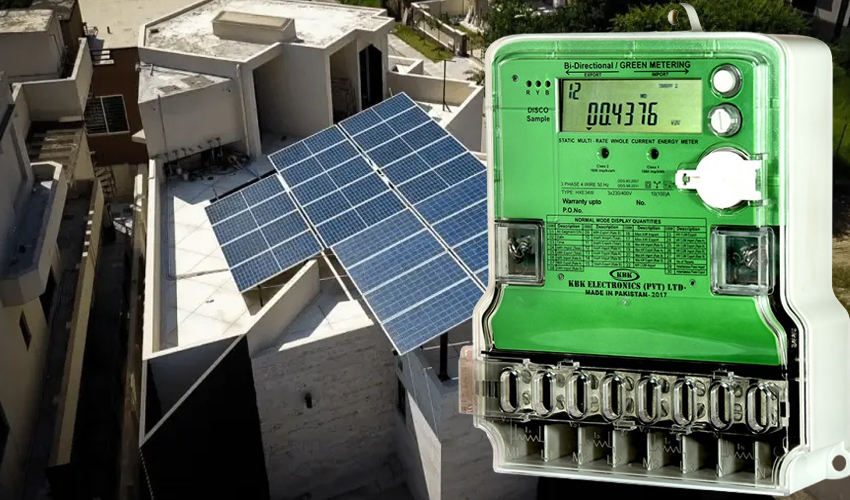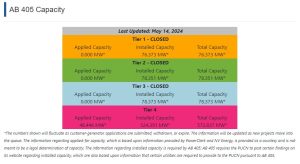Solar Net Metering to Be Phased Out – Get Hooked Up Before It’s Too Late!
- August 6, 2024
- Posted by: Matt Kreuz
- Category: News & Articles

Net metering is an electricity billing mechanism that allows consumers who generate some or all of their own electricity to use that electricity anytime, instead of when it is generated. This is particularly important with renewable energy sources like wind and solar, which are non-dispatchable. Nevada is currently in the last and final phase of making net metering credit available to new solar customers. After the Tier 4 net metering expires soon, you will no longer receive credit from NV Energy for your unused solar power.
When your solar energy system is connected to the NV Energy grid, it interacts with your household electricity needs in a few ways:
- Daytime Usage: Your solar panels generate electricity during the day, which you use to power your home. If your demand exceeds what your solar panels produce, you’ll draw additional electricity from the grid.
- Nighttime Usage: When solar panels aren’t generating power at night, you rely entirely on electricity from the grid.
- Surplus Generation: During sunny periods when your solar system produces more electricity than your home consumes, the excess is returned to the grid. This surplus generation benefits the environment and your wallet, as NV Energy credits you for this surplus energy through net metering.
Consider NV Energy’s bidirectional meter as the conductor of an orchestra, orchestrating the flow of electricity between your home and the grid. It diligently tracks the electricity you draw from the grid and the electricity you contribute back into it, ensuring you are billed accurately for the electricity you use and credited for the surplus energy you feed back to the grid.
In Nevada, we have a billing arrangement called Net Metering. Here’s how it works: the total energy your solar system produces over a month is subtracted from the total energy you receive from the grid. This gives you either a surplus or a deficit, credited or debited to your account at a standard price per kilowatt hour. However, it’s important to note that this is not a one-to-one arrangement. You pay for one kWh and get credit for 75 cents per kilowatt hour. So, if you are charged 20 cents per kilowatt hour, you are credited 15 cents. The difference goes to Warren Buffet. Also, any excess electricity you put back into the grid will only be credited to your account. If you put in more than you use over time, NVE will not send you a check for the difference. However, if your “offset” is more than 100%, you can use all the electricity you want, not just what you can afford.
Each month, the total energy produced by your solar system is compared to the total energy you draw from the grid. Depending on whether you have a surplus or a deficit, you’ll either receive a credit or be billed accordingly at the standard price per kilowatt-hour.
However, it’s important to note that it’s not a dollar-for-dollar exchange. While you’re charged for one kilowatt-hour, you’re credited at a lower rate. Currently, the Tier 4 rate is 75% of the retail price. For example, if you’re charged 20 cents per kilowatt-hour, you’ll receive a credit of 15 cents.
When net metering was reinstated in June 2017, Tier 1 offered 95% of the retail rate. As demand increased, Tier 2 was introduced in August 2018 at 88% of the retail rate, and Tier 3 followed in June 2019 at 81% of the retail rate, closing in June 2020 upon reaching capacity. Currently, Tier 4 provides 75% of the retail rate and is nearing total capacity, as indicated by the PUC website chart as of May 14. However, the 75% rate will remain unless modified by legislative action.

The timeline for Tier 4 reaching capacity and legislative response is still being determined. However, it’s wise to secure the lucrative financial benefits of net metering before it is no longer available.
“Offset” refers to the percentage of electricity your solar system generates compared to your average usage. It’s prudent to design a system slightly exceeding 100% offset to accommodate future needs, such as electric vehicle chargers or appliances like a hot tub. If you plan to add features like a swimming pool, you’ll want even more offset, though roof layout and HOA restrictions could limit the number of panels installed.
Most homeowners transitioning to solar find they want more power. Why? As you anticipate future electric vehicles and other appliances, your mindset shifts from conserving electricity to embracing abundance. You’ll likely find yourself wanting to expand your solar capacity.
It’s crucial to note that net metering in Nevada will not last indefinitely. States like California and Arizona have moved to cash metering and net billing, leaving traditional net metering behind. I recommend going solar soon to get grandfathered into these benefits for the next 20 years before changes occur. Nevada tends to follow suit with neighboring states, and it’s only a matter of time before net metering’s financial advantages diminish.
Our electrical grid was also built for centralized power distribution, not decentralized solar systems. This shift to distributed power poses challenges. Electricity typically flows from power plants to local substations and then to homes. The grid infrastructure isn’t designed to handle electricity flowing back to substations or power plants from solar systems. Therefore, each local substation has limits on how many homes can contribute power. As more solar systems are installed, utilities are pushing for changes to credit arrangements and caps on solar connections. Arizona, for example, limits solar contributions to 15% per substation. While Nevada’s limit isn’t set, securing your place early is essential.
Leave a Reply
You must be logged in to post a comment.
